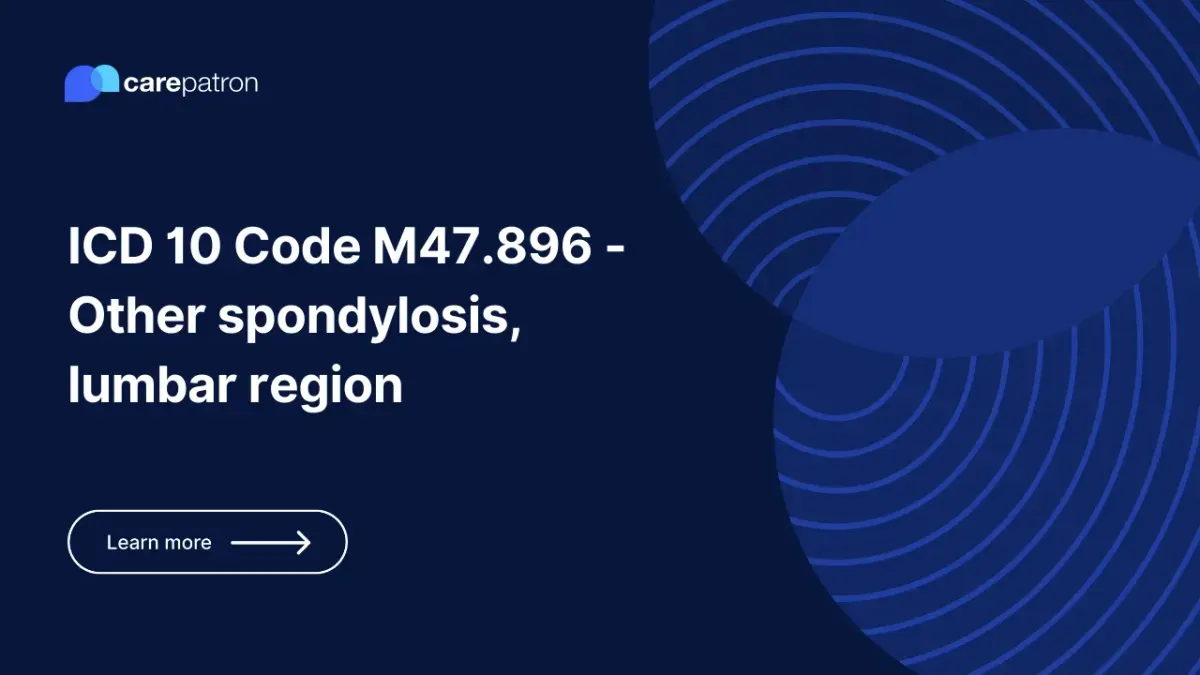
M47.896 – Other spondylosis, lumbar region
M47.896 is an ICD-10-CM code for lumbar region spondylosis. Explore its diagnosis, symptoms, and treatment options for effective management.
Use Code
Commonly asked questions
M47.896: Other spondylosis of the lumbar region commonly causes lower back pain, stiffness, and limited range of motion. In some cases, pain may radiate to the buttocks or legs, especially if nerve compression occurs. Severe cases may involve numbness, tingling, or muscle weakness.
This condition is primarily caused by age-related degeneration, leading to wear and tear of the spine. Other contributing factors include repetitive stress or injury, poor posture, obesity, genetic predisposition, and connective tissue disorders that weaken spinal structures.
Diagnosis involves a clinical evaluation, including a medical history review, physical examination, and imaging tests such as X-rays or MRI. These tests help assess degenerative changes, disc damage, and potential nerve compression in the lumbar region.
EHR and practice management software
Get started for free
*No credit card required
Free
$0/usd
Unlimited clients
Telehealth
1GB of storage
Client portal text
Automated billing and online payments
